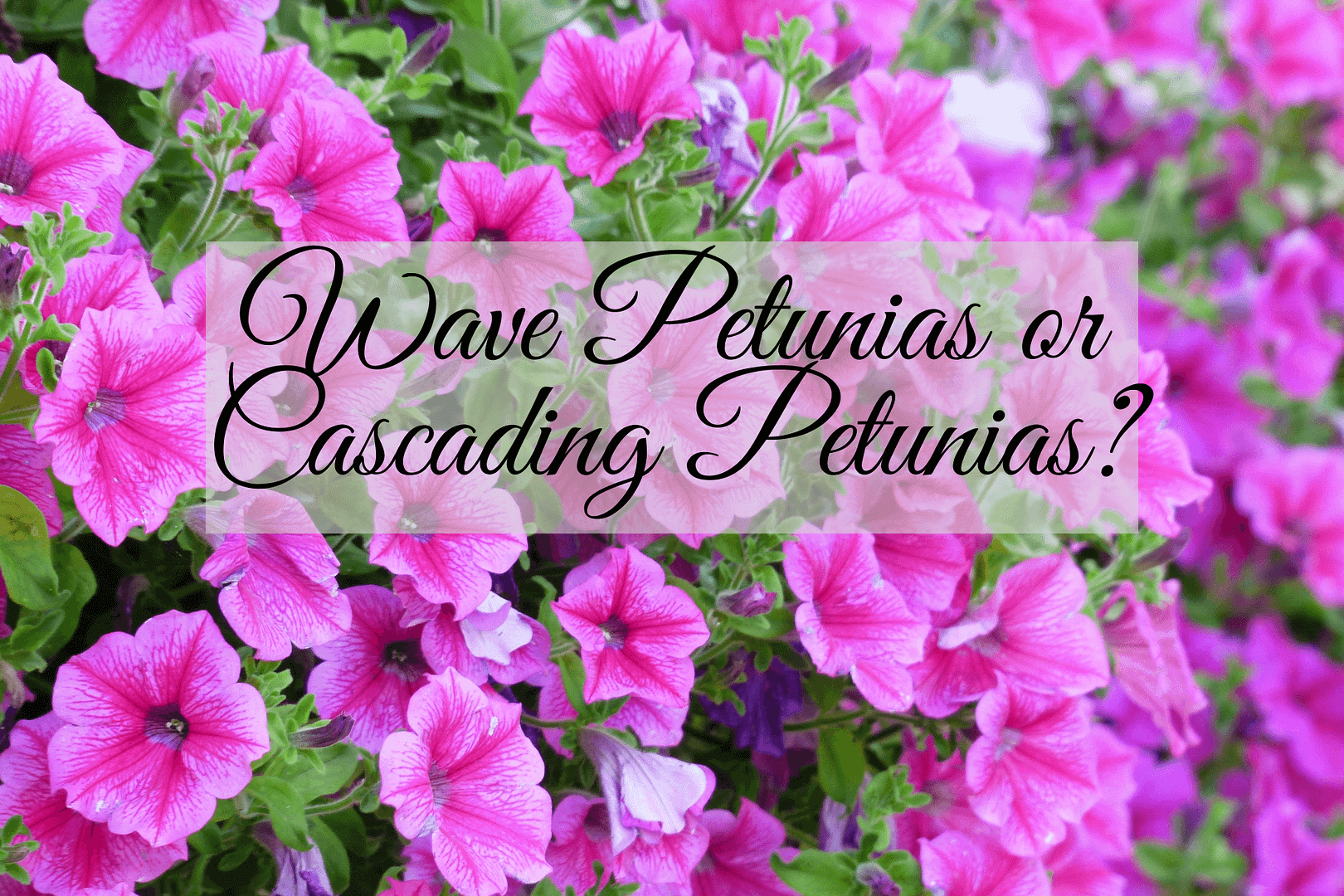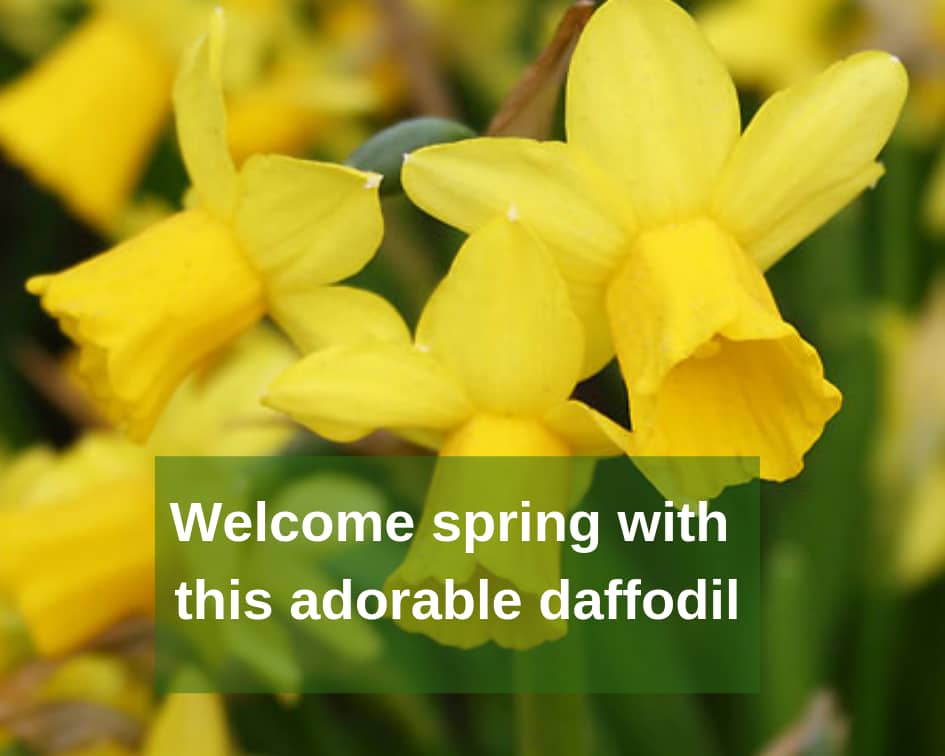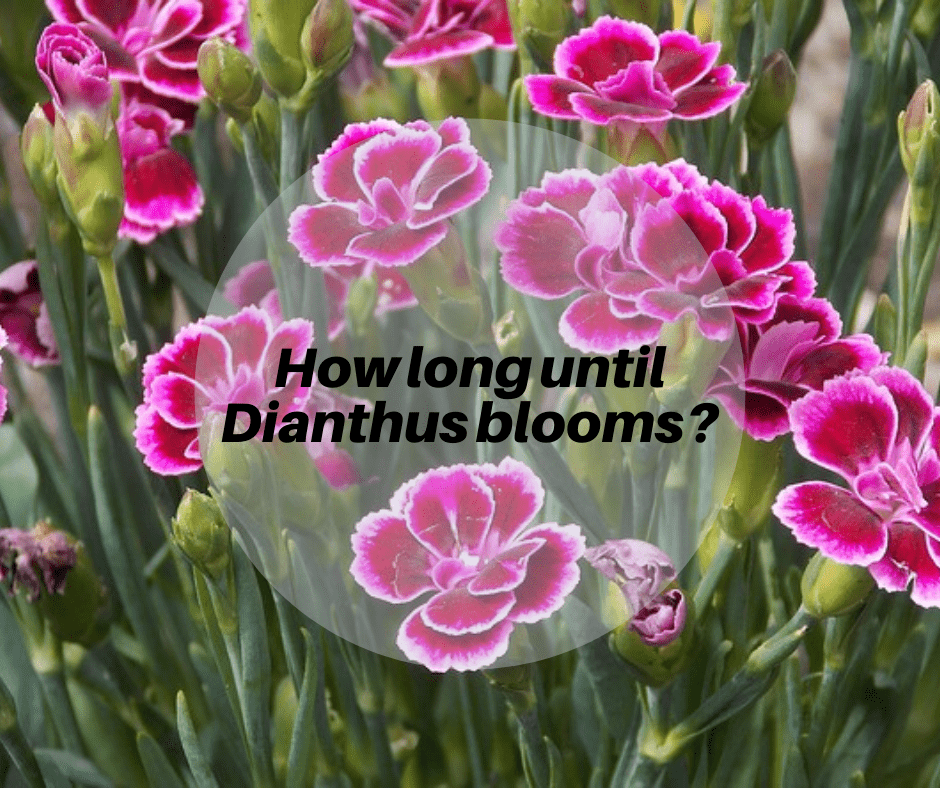This post may contain affiliate links. As an Amazon Associate we earn from qualifying purchases.
You may have seen them both at your local gardening center and wondered “What’s the difference between Wave petunias and cascading petunias? Read on to find out!
Wave petunias are one of five varieties in a series known as “Ride the Wave.” Developed in Japan, and introduced to the United States in 1995, they are marketed here by Ball Horticultural Company.
Cascading petunias may be one of several cultivars, and you may find them at nurseries and gardening centers under trademarked names such as Supertunia or Surfinia, both marketed by Proven Winners, and Cascadia petunias.
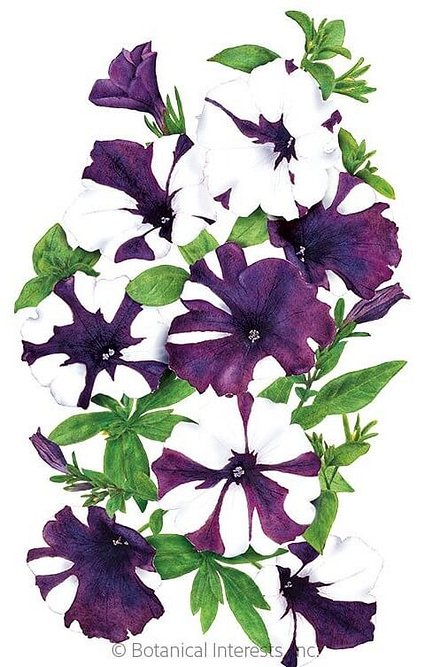
Growing habits of Wave petunias and cascading petunias
Wave petunias grow low to the ground – 4 to 6 inches in height — and spread from 3 to 4 feet. Each plant grows 5 to 7 inches tall with a 36- to 48-inch spread. If planted 12 inches apart they grow together, providing a flowering ground cover.
Cascading petunias, on the other hand, have a trailing growth habit. They typically grow 12 to 18 inches in height. Planted in a hanging container, the tendrils may hang up to 4 feet in length.
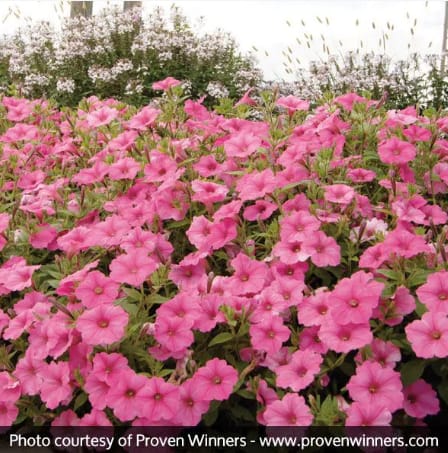
Blooming period
Wave petunias are mid-season bloomers, typically lasting until the first frost. Cascading petunias bloom early in the season. Some cultivars may persist through the entire growing season while others are finished by mid- to late-summer.
Neither Wave nor cascading petunias require deadheading – a quality known in the greenhouse floral industry as self-cleaning.

Are the flowers different?
Both Wave and cascading petunias come in a variety of colors. There are several Wave petunia colors from which to choose: red, white and various shades of pink and purple. Cascading petunias bloom in a larger variety of colors.
Flower sizes vary according to cultivar, from tiny to quite large. Wave petunias are single, although there is a variety in the series, Double Wave, that blooms in double flowers. Cascading petunias offer more double varieties than the Wave collection.

Fertilizing requirements differ
Probably the most important difference between Wave petunias and cascading petunias is their fertilizer needs.
Wave petunias require more fertilizer than cascading petunias. In the greenhouse they are provided fertilizer during every third watering.
Ball Horticultural Company recommends using 1 tablespoon of liquid 10-4-3 fertilizer in a gallon of water to water the Wave petunia throughout the season. Every seventh irrigation should be with plain water.
Supertunia and some of the other cascading petunias typically require fertilizer every two weeks in May and once a week in June. Dilute the aforementioned 10-4-3 fertilizer to 3/4 tablespoon in a gallon of water.
How to use these petunias
The Wave petunia is also known as “spreading petunia,” and is best utilized in the ground where it can spread and cover garden beds.
Cascading petunias, on the other hand, are ideal for container plantings. Some varieties tend to be aggressive and shouldn’t be mixed with other container plants but all look stunning spilling over the side of a hanging basket or window box.
Some varieties of cascading petunias bloom better with a half day of shade, so check the card that comes in the plant’s nursery pot for care requirements.
- Petunias are classified as tender perennials, meaning they will return each year when grown in frost-free regions. Petunias are officially winter hardy in USDA Hardiness Zones 9 to 11. Find your growing zone here.
- Harden off both types of petunias when you bring them home. Retailers are advised to keep them in the shade to avoid having to water too frequently so they aren’t used to the sun. To harden off a plant, place it in the sun for one hour on the first day and then place it in a lightly shaded spot. Gradually increase the amount of sun it receives over the course of a week until it is in full sun all day.
- Ensure that the soil remains moist. If you’ll be growing yours in containers, keep in mind that during hot weather, you’ll need to water more frequently.
- Petunias have a tendency to start looking scraggly toward mid-season. This is the ideal time to prune it. You can safely remove 1/3 of the petunia’s growth, using sterilized, sharp garden snips. It may appear a bit shocked after the pruning, but it will bounce back.
- Some petunia cultivars don’t require deadheading, but to be on the safe side, remove spent flowers as they occur. This will keep the plant from producing seed and dying.
Mention of a fertilizer or pesticide, or use of a pesticide or fertilizer label, is for educational purposes only. Always follow the product’s label directions attached to the container you are using. Be sure that the plant you wish to treat is listed on the label of the pesticide you intend to use. And, when growing edibles, observe the number of days between pesticide application and when you can harvest your crop.
